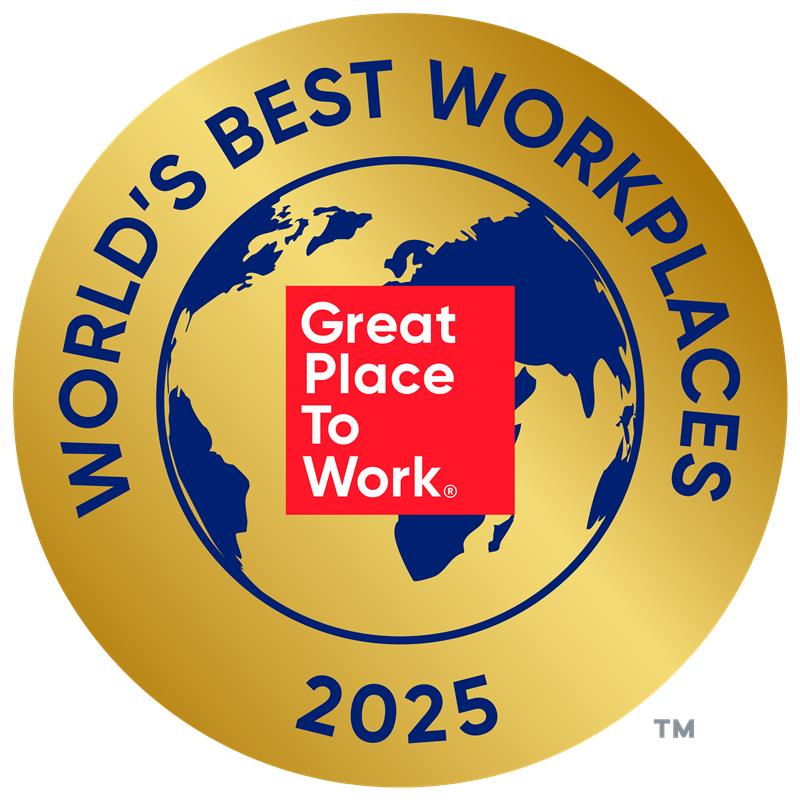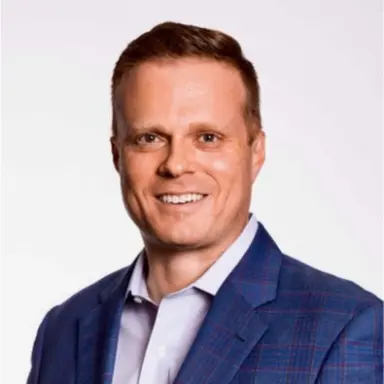
At Experian, we often say our people are our biggest superpower – and today, I’m thrilled to share that this belief has been recognised once again. Experian has been named one of the 2025 World’s Best Workplaces™ by Fortune and Great Place to Work® for the second year in a row.
This achievement reflects the culture we’ve built together – one that’s welcoming, inclusive, and rooted belonging. It’s a celebration of every colleague who brings their whole self to work, who lifts others up, and who powers opportunities for our clients, consumers, and communities.

We’ve made it our mission to create a workplace where everyone feels included, respected, and empowered. That’s why we’re proud to have earned top scores on the Corporate Equality Index and the Disability Equality Index, and to be recognised with the Outie Award for Workplace Excellence and Belonging.
These recognitions matter. But what matters most is how our people experience life at Experian. Whether it’s collaborating, innovating, or growing through world-class development of products, services and contributing to our communities, our culture is designed to help everyone thrive.
We’ve also made bold commitments to career development. Initiatives like Global Careers Week, the AI-driven performance coach Nadia, and the NextGen Forum – a global leadership development programme for emerging talent from across our regions – give our people the resources to take charge of their growth and build a “One Experian” mindset.
Being named one of the World’s Best Workplaces is a moment to celebrate but also a reminder to keep aiming higher. The world of work is evolving fast, and so are we. From embracing AI to enhancing our digital workplace experience, we’ll continue to push forward and listen to our people every step of the way.
Questions we will discuss:
- What does “retirement readiness” mean to you, and how can someone tell when they are financially ready to retire?
- Is there a magic number for retirement savings, and what factors should someone consider when setting a retirement goal?
- How can someone estimate their retirement expenses realistically?
- What are some common myths or misconceptions about how much money you need to retire?
- How should Gen Z, Millennials, and Gen Xers each approach retirement planning differently based on their stage of life?
- What are the biggest obstacles people face when trying to save for retirement, and how can they overcome them?
- How can you balance saving for retirement with paying off debt or supporting family today?
- What tools, calculators, or strategies can help people figure out if they’re on track for retirement?
- How can people prepare for unexpected costs or life changes that could impact their retirement plans?
- What’s one piece of advice you’d give someone just starting—or restarting—their retirement savings journey?
| Columns 1 | Column 2 | Column 3 | Column 4 |
|---|---|---|---|
| Row 1 Col 1 | |||
| Row 2 Col 1 | |||
| Row 3 Col 1 | |||
| Footer 1 | Footer 2 | Footer 3 | Footer 4 |

Credit Chat
Stretching your Dollars: Practical Tips to Cut Costs and Save More
February 5, 2025 3-4 PM ET
- What does “retirement readiness” mean to you, and how can someone tell when they are financially ready to retire?
- Is there a magic number for retirement savings, and what factors should someone consider when setting a retirement goal?
- How can someone estimate their retirement expenses realistically?

Greater transparency in buy now, pay later activity is key to helping consumers build their credit histories and supporting responsible lending. We have members of the military right now right out of high school and there’s not a lot of experience managing their own money. They’re quickly thrust into a place where they don’t have a support system to do that. We have members of the military right now right out of high school and there’s not a lot of experience managing their own money. They’re quickly thrust into a place where they don’t have a support system to do that. We have members of the military right now right out of high school and there’s not a lot of experience managing their own money. They’re quickly thrust into a place where they don’t have a support system to do that. We have members of the military right now right out of high school and there’s not a lot of experience managing their own money. They’re quickly thrust into a place where they don’t have a support system to do that. We have members of the military right now right out of high school and there’s not a lot of experience managing their own money. They’re quickly thrust into a place where they don’t have a support system to do that.
Experian North AmericaScott Brown, Group President, Financial Services

To gear up for the second full day of Vision 2012, we chat with Kerry Williams, Experian group president, to discuss how clients can achieve growth using three key strategies. Check out the video to see his recommendations:

The first day of Vision 2012 covered numerous topics and offered attendees many new industry insights. In this episode of Experian TV, we catch up with Steve Wagner, president, consumer information services, to discuss universe expansion and strategies to find new consumers, and Tony Hadley, senior vice president, government affairs, to review consumer financial literacy and the CFPB. We also sit down with Andy Sheehan, senior vice president of marketing, to discuss this year’s Vision theme: growth.

The lifespan of a fraudster is short, but prolific. It typically takes about seven days to wreak millions of dollars of damage across a wide network of unsuspecting customers. The fraudsters begin by sending tens of thousands of emails to unsuspecting folks—your customers. They politely ask them to log-in to their bank account to confirm their password. The emails look real enough to come from your financial institution. In fact, they look so real that a percentage of account holders think they’re helping the bank rectify a problem, while they’re actually handing the fraudster their critical account data. Once handed the login and password information, the fraudster’s well-oiled network taps into accounts, transfers funds to offshore accounts, cleans out balances, and leaves the account holders holding the empty bag of overdrawn accounts because of identity theft. Most fraudsters are so clever and so bold, they often send a second email to remind account users that they still need to confirm their password. Net gain: A second wave of accounts to tap, swap and swindle. Just when account holders are realizing they’ve been cleaned out, when their banks are calling them about irregular account activity, or when their credit card companies are sending them breach notification letters, they disappear into thin air. But they’ll most assuredly be back. What You Can Do to Stop Fraud At Vision 2012, Experian is presenting new analytics that show that the vast majority of new account fraud occurs in the first seven days. Many institutions believe that if they have good technologies in place to stop fraud at the time of account origination, they’re all set. Wrong. Even with the best systems in place, no financial institution or person is immune, and it’s critical that we monitor accounts after they are opened to look for signs of suspicious activity. Here are some tips to help you stop or prevent fraud: Be aware that fraudsters are 10 times faster at creating fraud than we are at catching them: most bulldoze their way through accounts and disappear within 15 days, yet it takes an average of 151 days for us to identify it. Be vigilant to warn your customers about fraudsters and identity thieves with newsletter articles, blog stories, press releases and seminars. Ask your customers to pinpoint questionable behavior, such as new account openings without a birth date, but with the same name and social security number. Re-check accounts after they have been opened, which can identify suspicious activity and allows for a significant lift in fraud captures. Consider creating videos on YouTube with fraudster scenarios. Use your social media tools to share fraudulent activity with your customer base. Deploy Experian’s latest fraud detection and prevention platform, Experian’s Precise ID, to offer cutting-edge resources that enable you to outpace criminals by detecting, avoiding, managing and actually preventing current-account fraud activity –– within the first seven days of account origination. For more information, download: “Fraud detection in newly opened accounts: Connecting data helps predict identity theft” whitepaper.
2024 Best Place to Work for Disability Inclusion


